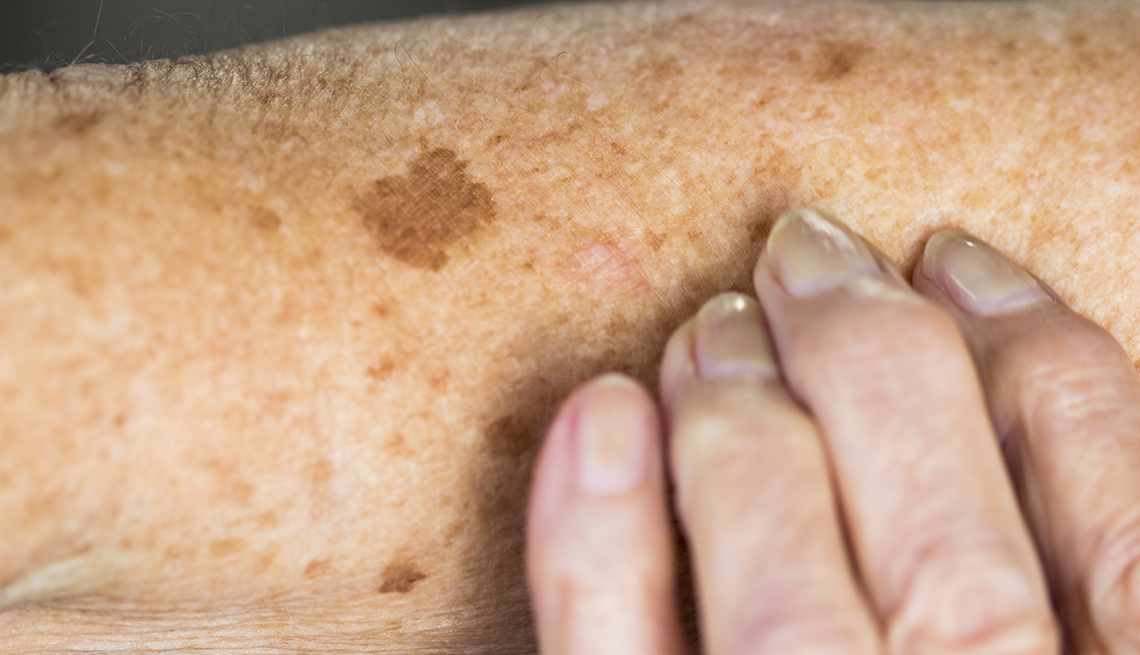Play all audios:
Is your skin sending up red flags? Even if you diligently watch for changing moles and other possible signs of skin cancer, you should not ignore changes that are unlikely to be cancer but
could spell trouble, skin-health experts say. In some cases, these changes are warning signs of other potential problems; in others, they are treatable conditions that tend to get worse if
you do nothing. 5 SIGNS OF SKIN CANCER Some skin changes, of course, may signal cancer and should be checked out by a doctor. Signs of the most serious skin cancer, melanoma, can include:
* A mole or other spot that is changing * A spot that differs from any other spot * A growth that itches, bleeds or hurts * A band of color beneath or around a nail * A sore that does
not heal or heals and returns Source: _American Academy of Dermatology_ Here are a few common skin changes to watch for. 1. VERY DRY SKIN Dry skin isn’t deadly, but it can make you
vulnerable to more serious problems, including skin infections and inflammation. As we age, the glands in our skin produce less oil, making it drier. Joseph Jorizzo, M.D., a professor of
dermatology at Wake Forest University School of Medicine in Winston-Salem, North Carolina, estimates that about one-third of people are especially prone to dryness because they have low
levels of a barrier protein found in the skin’s outer layer. Those people are “really going to notice it when they get past 55,” he observes. Dryness tends to be worst in winter, thanks to
dry indoor air, but the most vulnerable people have problems in summer, too, because their skin has low heat tolerance, Jorizzo says. Hot baths and showers, frequent handwashing, harsh soaps
and chlorine in pools can dry skin further. Your best defense, Jorizzo says, is a daily moisturizer containing ceramide fatty acids, found in many drugstore brands, applied right after your
bath or shower. Shari Lipner, M.D., an associate professor of clinical dermatology at Weill Cornell Medical College in New York City, adds that “you want to use something as thick as
possible.” Look for a product that won’t drip off an overturned palm, she advises. 2. ITCHY, SCALY OR CRACKED SKIN Skin that isn’t just dry but is itchy, scaly, cracked, inflamed or
otherwise irritated requires a higher level of attention, Jorizzo says. Many people with milder irritation will get relief from an over-the-counter hydrocortisone cream, he says. But more
severe and persistent problems need medical attention and a proper diagnosis. One common diagnosis: eczema, a disorder in which the skin becomes inflamed, red and itchy. Although many people
think of eczema as a childhood disease, it’s also common in later years, as a complication of dry, damaged skin, Jorizzo explains.

